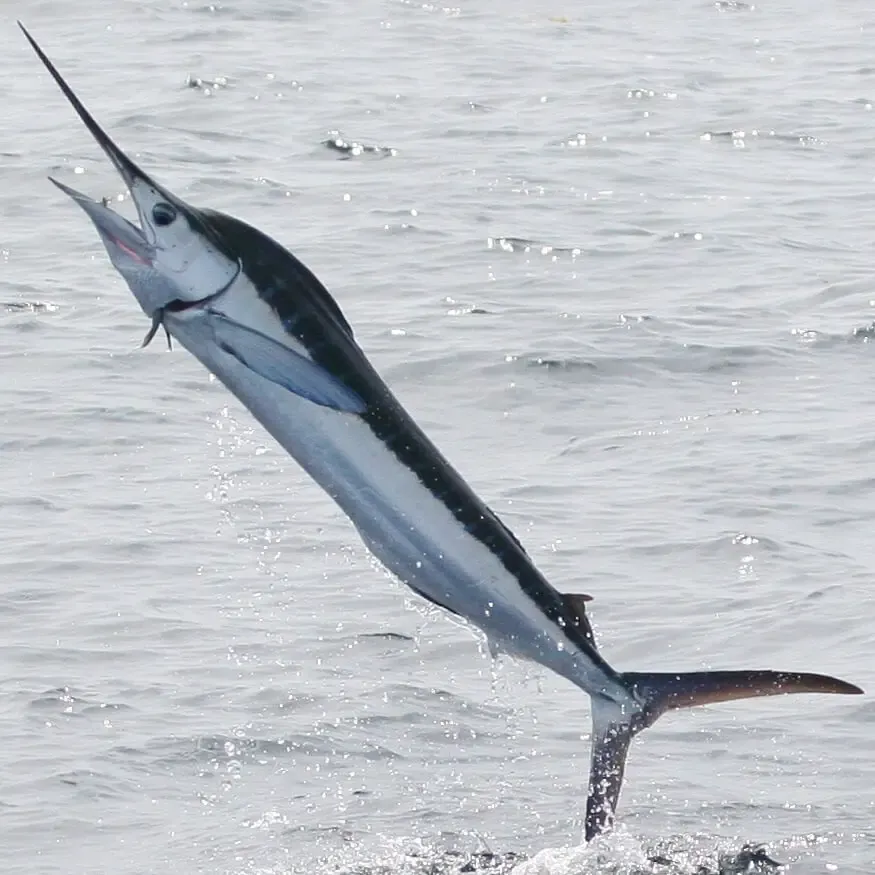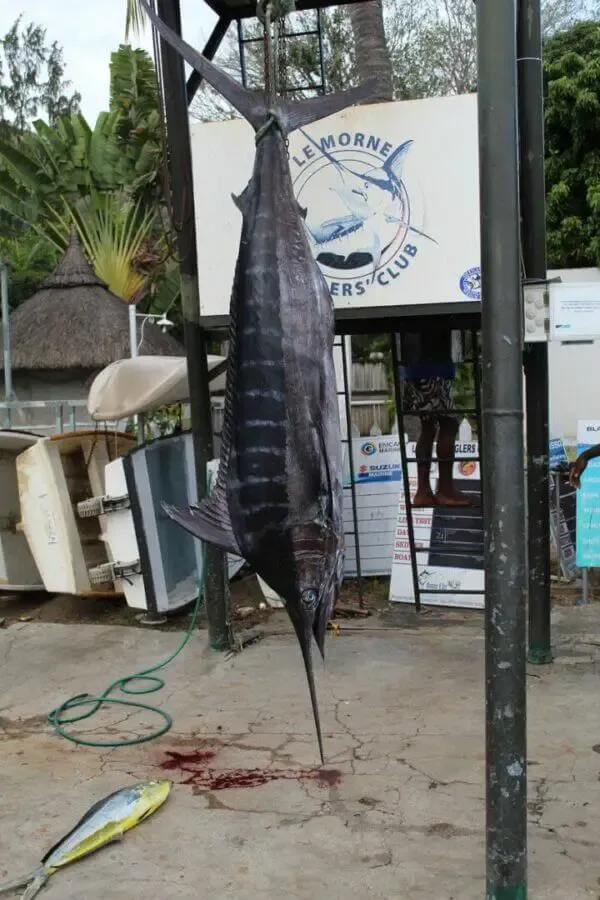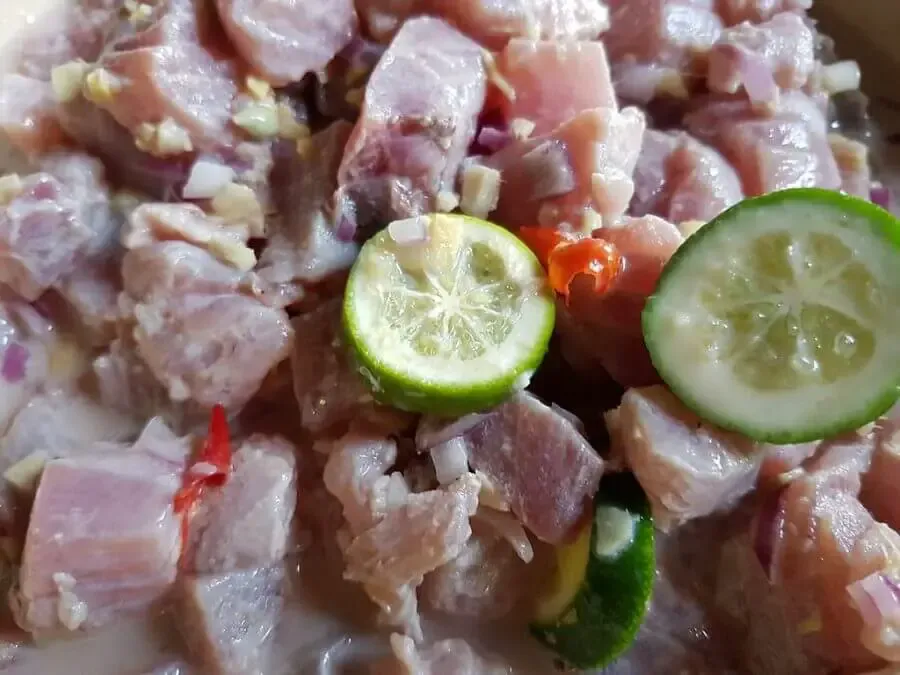Blue marlin is generally not considered a commonly consumed fish due to its large size, robust flavor, and relatively high mercury content. While it is possible to eat blue marlin, it is important to note that it is often preferred for sport fishing rather than for culinary purposes.
Blue marlin is a highly prized game fish known for its strength and acrobatic jumps when hooked. Its most distinguishing feature is the long, spear-like bill. The bill is elongated and sharply pointed, resembling a sword. It is used as a weapon for hunting and capturing prey, allowing the blue marlin to slash and stun its prey before consuming it.
Catching blue marlin is an exhilarating and challenging endeavor that requires specialized fishing gear capable of handling the power and size of these majestic fish. Use a heavy-duty saltwater fishing rod and reel combo designed specifically for big game fishing. Look for a strong, sturdy rod with a fast action, capable of handling heavy line weights and lures. You’ll also need a high-quality and powerful offshore fishing reel capable of handling the strength and endurance of these massive fish.
The most common method for fishing blue marlin is trolling. Trolling involves dragging lines with bait or lures behind a moving boat. Typically, large artificial lures or rigged baits such as squid, bonito, or mackerel are used to attract the blue marlin.
What is the Difference Between a Blue Marlin and a White Marlin?
Blue and white marlin are two different species of marlin, both belonging to the billfish family.
Blue marlin fish are typically found in offshore waters of tropical and subtropical regions around the world. They prefer warm waters. White marlin are also found in offshore waters but are more commonly associated with the Atlantic Ocean, particularly the western Atlantic.
Blue marlin are generally larger than white marlin. The bills of blue marlin and white marlin differ in shape. Blue marlin have a long, slender, and pointed bill, while white marlin have a shorter, rounded bill.
Blue marlin are cobalt-blue color on their back and upper body. They also have a silvery-white underbelly. In contrast, white marlin have a bluish-gray to silver coloration on their upper body and a silver-white underbelly.

Can You Eat a Blue Marlin?
The blue marlin is edible. However, it can be quite strong-tasting and reminiscent of swordfish or shark.
The blue marlin is occasionally used in Japanese cuisine, particularly in sushi and sashimi dishes. In addition to sashimi, cooking marlin is also practiced.
Remember that blue marlin, like other large predatory fish, tends to accumulate high levels of mercury in its tissues, which can be a health concern if consumed in large quantities.
If you do choose to eat blue marlin, please consume it in moderation.
What Is the Best Marlin to Eat?
The best marlin for eating is the striped marlin. Striped marlin has a milder flavor compared to other marlin species, with a delicate and slightly sweet taste. Its flesh is firm, moist, and has a fine texture, making it well-suited for various cooking methods.
The white marlin is the least preferred for eating compared to other types of marlin.

What Does Blue Marlin Taste Like?
Blue marlin meat has a robust flavor often described as rich, meaty, and slightly sweet. The flesh of blue marlin is firm and dense, similar to a steak, and it has a moderately strong flavor compared to other fish.
Some people liken the taste of blue marlin to that of swordfish or tuna, as they share some similarities in texture and flavor.
However, other people find it too gamey and chewy.
How to Clean and Fillet a Blue Marlin?
Cleaning and filleting a blue marlin can be challenging due to its large size and tough skin. Here’s a great video on how to clean and fillet any marlin:
What Is the Best Way to Cook a Blue Marlin?
The blue marlin is a versatile fish and can be cooked in various ways. I recommend grilling, which is the perfect cooking method for fish with a firm texture.
Season the marlin steaks or fillets with some marinade or spices, then grill them over medium-high heat for about 4-6 minutes per side.
If you want to bake blue marlin fillets, preheat the oven to around 400°F (200°C). Place the fillets in a greased baking dish and season them with herbs, spices, or a marinade. Bake for approximately 10-15 minutes.
You can also pan-sear the fillets or steaks over medium-high heat. Season the marlin with salt, pepper, or your preferred spices, then sear the steaks or fillets for a few minutes on each side until they develop a golden crust.
Remember to avoid overcooking blue marlin, as it can become dry and lose its flavor.

Are Blue Marlins an Endangered Species?
While they are not considered a threatened species, local populations of blue marlin can face pressure from overfishing, habitat degradation, and bycatch in certain areas.
Anglers and sport fishermen highly value blue marlins for sport fishing and commercial purposes, which has led to concerns about their sustainability.
What Are Some Blue Marlin Facts?
- The blue marlin’s bill can reach impressive lengths, with the average size ranging from about 1.5 to 2 times the length of the fish’s lower jaw.
- Blue marlin has plenty of health benefits for those who eat it; it contains omega-3 fatty acids, vitamin B12, vitamin D, selenium, and niacin.
- Despite its nutritional value, it’s advised to exercise caution when eating blue marlin due to its high amount of mercury. Pregnant women or young children are not to eat this fish.
- The blue marlin is a large fish; it can reach lengths of up to 14 feet and weigh over 2,000 pounds.
Want to learn about other fish to eat? Check out our other post – Can You Eat Wahoo?



